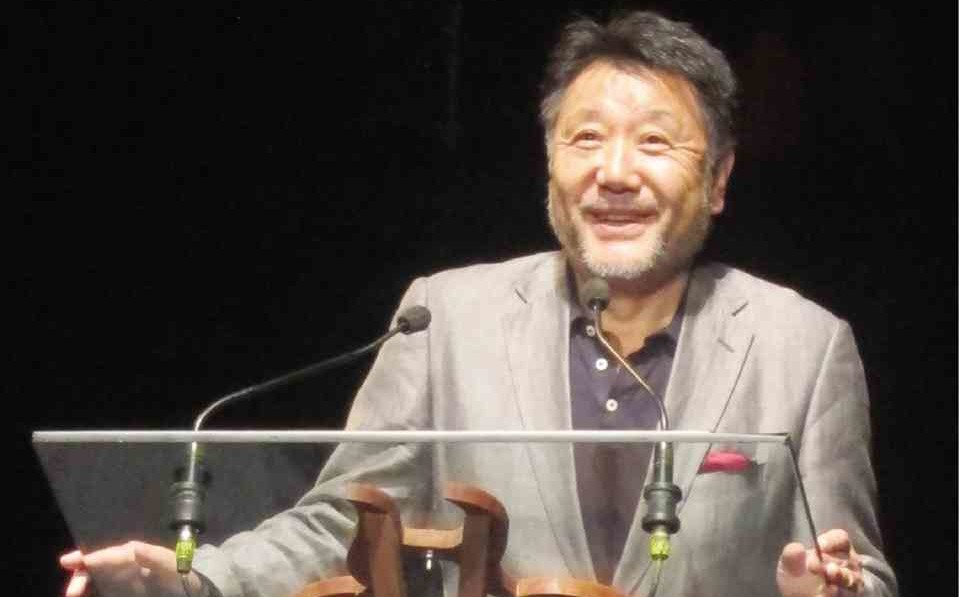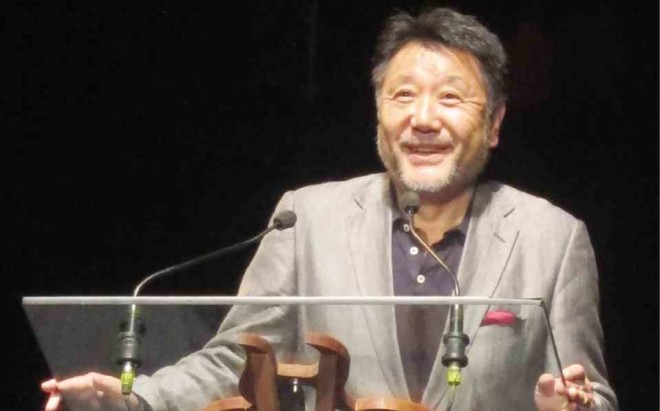
I WAS impressed. I love that film. I was really intrigued by the way Mendoza showed those characters. Everybody in that film was great—not only Jaclyn Jose.”
That was visiting Japanese director Masato Harada talking with members of the media at Hotel Jen on Roxas Boulevard, declaring his admiration for Brillante Mendoza’s celebrated 2016 Cannes competition entry, “Ma Rosa,” described by film critics as a gripping portrayal of Philippine poverty, corruption and working-class families. Cannes had named Jose best actress.
“Watching the film,” said Harada, “I felt the same kind of impact as when I saw Martin Scorsese’s ‘Raging Bull’ or ‘Good Fellas,’ because it’s (‘Ma Rosa’) a sort of anthropological study.”
“‘Ma Rosa’ is definitely better than (2015 Palme d’Or winner) ‘Dheepan’ directed by Jacques Audiard… and definitely better than (Oscar Best Foreign Language Film) ‘Son of Saul,’” said the Japanese filmmaker.
“Compared with contemporary films with accolades, ‘Ma Rosa’ is a big shining film… For me, the best picture of 2016.”
Harada was one of two Japan filmmakers presenting their latest work in Eiga Sai, the annual Japanese film festival staged by Japan Foundation Manila (JFM), which this year teamed up with the Cinemalaya Independent Film Festival.
Harada seemed generous with praise either for contemporaries such as Mendoza and Audiard or master filmmakers Yasujirô Ozu, Ingmar Bergman and Alfred Hitchcock.
Laughingly summing up the three masters as men who “in a way see this horrible mother complex,” Harada then said that “Chronicle of My Mother,” his film adaptation of an autobiographical novel by highly respected Japanese author Yasushi Inoue, was an homage to Ozu, Bergman and Hitchcock.
‘Jidaigeki’
“Kakekomi,” which kicked off Eiga Sai on July 7, was Harada’s first foray into jidaigeki, or samurai period film, a genre he has enjoyed watching since childhood. The film is about the so-called kakekomi, runaway wives and mistresses seeking divorce during the Tokugawa era.
Another adaptation of the writings of Inoue, the movie depicts women as second-class citizens, many of them maltreated and publicly humiliated. Despite the subject matter, the story is conveyed with a sense of balance, injected with just enough humor, action and gritty swordfights.
Setting a more serious tone though still endowed with Harada’s touch of humor, the controversial film “The Emperor in August” had its only Eiga Sai screening on July 8 at the Cultural Center of the Philippines.
Produced to commemorate the 70th year since the Pacific War ended, the film reveals the politics and conflicts—which all happened away from the public eye—between Emperor Hirohito and Japan’s government officials during the tail end of the war.
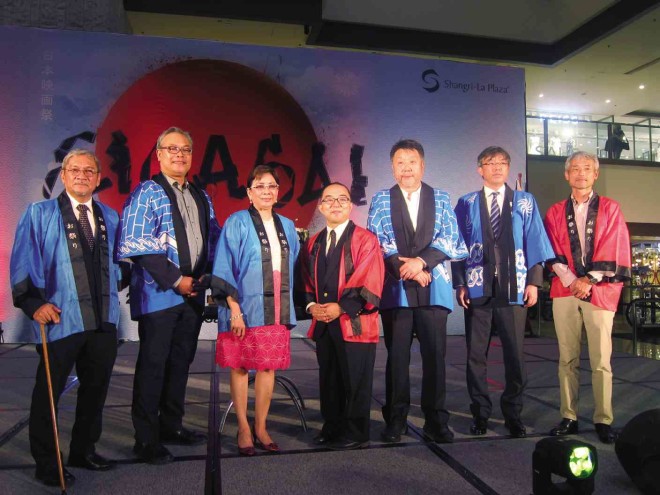
Based on the historical tome “Japan’s Longest Day” by Kazutoshi Hando—who interviewed people involved in the events and survived the war—the story culminates on the day before the young royal’s radio announcement of Japan’s surrender.
“I made the film with a liberal point of view,” said Harada, who reached another career milestone with “The Emperor,” his first war movie.
Ambivalence
It’s a viewpoint that humanizes the emperor who, said the director, had not been properly portrayed in films. Hirohito had wanted to end the war but, because of political opposition and the Japanese monarch system, he couldn’t immediately declare surrender, Harada said.
Hando’s book was first adapted for cinema in 1967 but Harada said that movie omitted the source material’s recreation of actual conversations by the emperor and other key players.
“In the ’60s you can’t show the emperor in close-ups or [have him] played by actors, otherwise right-wing parties [would react against it],” the filmmaker explained.
The omissions nonetheless frustrated Harada, whose research showed there were close, near-familial ties among Hirohito, Minister of the Army Gen. Korechika Anami and Prime Minister Kantaro Suzuki.
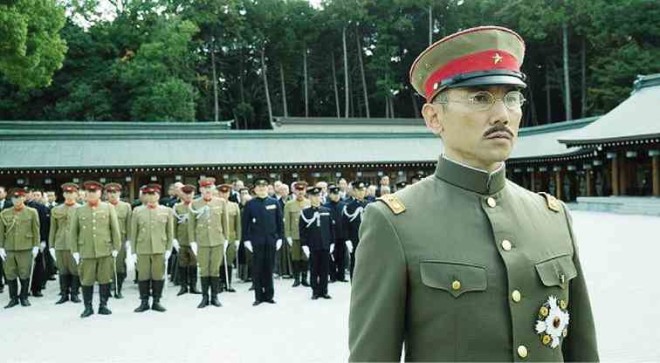
Their dynamics had what Harada referred to as “a family atmosphere.” It developed when Hirohito was younger, with Suzuki having the post of grand chamberlain at the royal palace for about seven years. Four years of that period saw Anami as the emperor’s aide-de-camp and later on becoming regimental commander of the Imperial Guards.
“This [film] has the kind of family background buried in history but which I wanted to depict,” explained Harada. “You can see the great ambivalence in General Anami, because he was torn between being a military whose son was killed in battle and… [being] very loyal to the emperor, sort of treating him as if he were a brother.”
Longtime relationship
Harada’s longtime relationship with film started even before his birth in 1949 in Numazu, Japan.
His mother was a movie fanatic. She would go to the movies even when she was pregnant with Masato. In her teens, she auditioned for an Akira Kurosawa film, hoping to be a double for a lead actress who got sick.
Harada’s mother eventually inherited an inn where actors, film crew and directors like Kurosawa booked lodgings, so the son grew up, so to speak, among industry professionals roaming their household.
Located near Mt. Fuji, their hometown provided accessible temporary dwellings for those filming on location in the mountain area. A picture company also built a base in Numazu and brought in American movies.
Samurai films were the young Masato’s favorite until he learned to read subtitles and got hooked on Westerns and war movies as well. “When I saw war movies made by American Hollywood, I was on the Allied side and Japanese soldiers were my enemies,” recalled Harada with a laugh.
By age 9, he would tag along with his mom to film sets in Kyoto, which the director calls “the mecca of making jidaigeki.”
In fact, his first taste of being on an actual set was during Kurosawa’s filming of “Seven Samurai,” where the sight of samurai bandits on horses—actually actors in full gear—terrified the youngster.
“My mother and her friends got bored by just watching the filming [process] because it goes the same pattern, but I never got bored,” said Harada.
“I stayed the whole day watching, talking to crew members and actors. It was fun for me. Probably at that time I made up my mind to become a filmmaker, or that my future should be associated with something about movies.”
Kubrick connection
He started out as a journalist, serving as a film correspondent in Los Angeles between the late ’70s till the early ’80s, often shuttling between the US and Japan. It’s a career that probably kicked off his now-prolific screenwriting.
“Writing is an easy thing while directing is harder,” said Harada. “I don’t hire [other] writers because they’re too slow.”
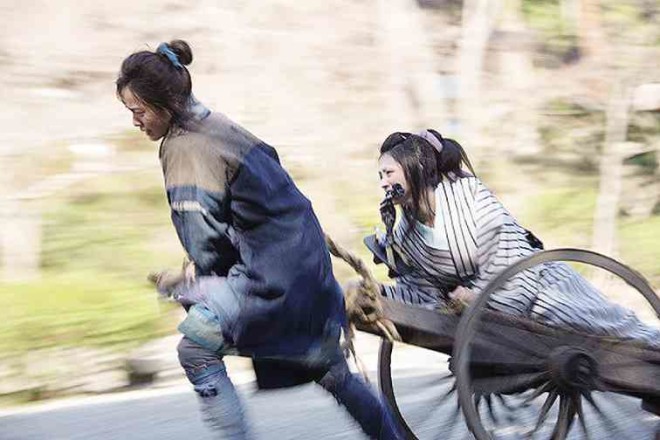
Eventually he would work with Stanley Kubrick, who asked him to do the Japanese translation for “A Clockwork Orange.” Working with Kubrick was a fascinating experience for Harada, who thought that the American auteur’s war film, “Full Metal Jacket,” was unique in its creation of “a new type of vulgarity.”
Since then the Japanese filmmaker himself has helmed more than 20 projects, taking on various themes—from socially relevant topics to studies of the human condition, to jidaigeki as well as unexplored perspectives of Japan’s history.
No wonder Harada openly admired “Ma Rosa,” whose director is perhaps as fearless as himself and Kubrick, keen to push the boundaries and to produce intelligent work for cinema.
The 2016 Eiga Sai will run until Aug. 21. Screenings will be at Cultural Center of the Philippines, Roxas Blvd., Pasay (Aug. 6, 9, 10, 12); Abreeza Mall Cinema, Davao (July 22-24); FDCP Cinematheque, Davao (July 26-30); SM Baguio Cinema (Aug. 11-14); FDCP Cinematheque Baguio (Aug. 15); UP Film Institute, Quezon City (Aug. 17-20); and Ayala Center Cebu Cinema (Aug. 17-21).

